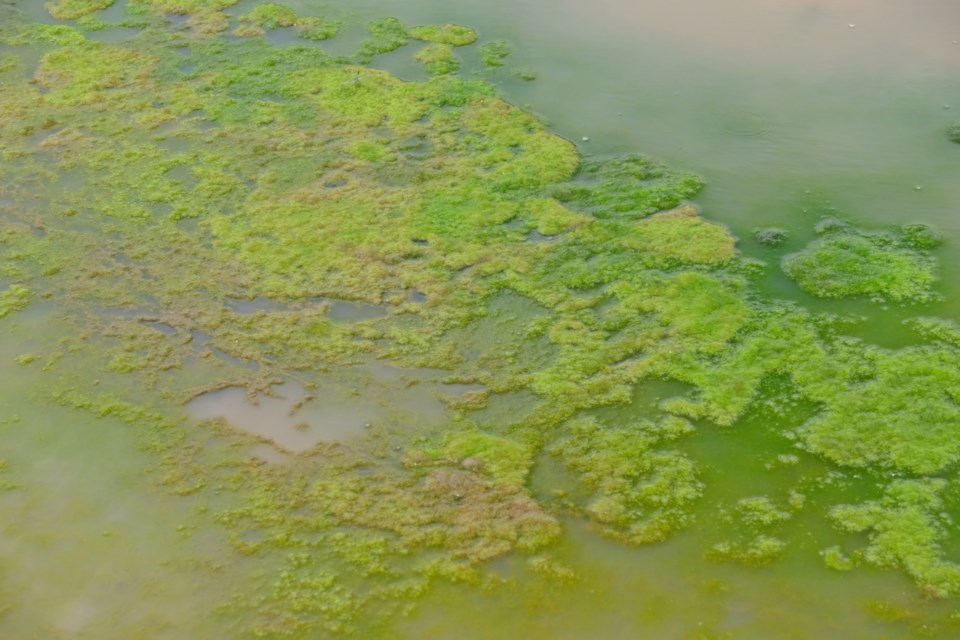NEWS RELEASE
CITY OF LONGMONT
*************************
It’s the time of year when blue-green algae, also known as cyanobacteria, can grow rapidly in slow-moving bodies of water, such as lakes and ponds. When blue-green algae blooms, some species can produce cyanotoxins which can be harmful at elevated levels to dogs, wildlife, livestock or humans that come into contact with or ingest the water.
City of Longmont Parks staff stress that visitors and residents should keep themselves, children and pets out of the water in any areas where blooms are observed. The toxicity of a blue-green algae bloom is difficult to predict because a single species can have both toxic and non-toxic strains, and toxic strains do not always produce toxins.
Testing is not conducted at most of the many lakes and ponds within the city, but the city of Longmont may monitor, test, or close a location if a bloom is reported by staff or a member of the public. City staff does visually inspect Union Reservoir — the only reservoir where swimming is allowed — for potentially toxic algae blooms. No blooms have been detected at Union Reservoir this season, so the reservoir remains open for swimming, fishing and boating.
Swimming in bodies of water other than Union Reservoir is never allowed. This includes Golden Ponds, Izaak Walton, Jim Hamm and Sandstone Ranch nature areas, as well as McIntosh Lake. McIntosh Lake allows carry-on, non-motorized boats only. This includes canoes, kayaks, belly boats, sailboats and other small boats. Inner tubes are not allowed and swimming is prohibited at all times. Dogs are also not permitted in the water at these locations, per Parks guidelines.
According to the Colorado Department of Public Health and Environment, harmful algae blooms often have the following characteristics:
- May look like thick pea soup or spilled paint on the water's surface
- Can create a thick mat of foam along the shoreline
- Usually are green or blue-green, although they also can be brown, purple or white
- Sometimes are made up of small specks or blobs floating just at or below the water's surface
Harmful algae blooms are not:
- Long, stringy bright green grass strands that appear either slimy or cottony
- Mustard yellow (This probably is pollen.)
For more information on algae blooms, please visit bit.ly/LongmontAlgaeBlooms or call 303-651-8416.
*************************


.jpg;w=120;h=80;mode=crop)
